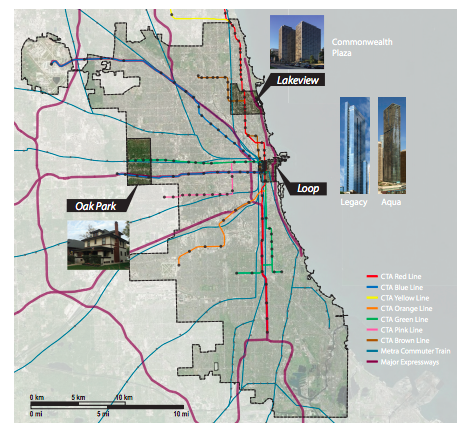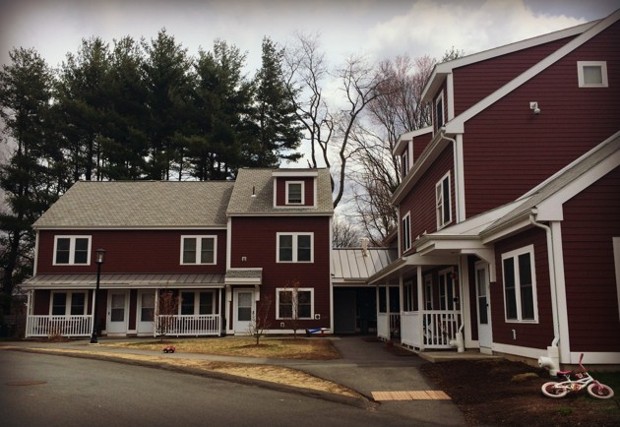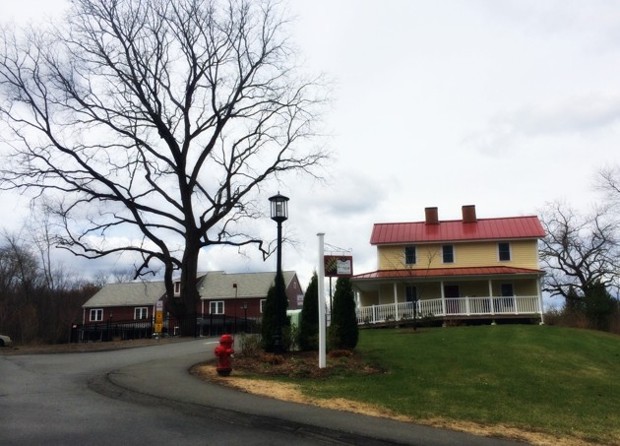Cap and Trade Tax on Single Family Homes to pay Affordable Housing
Just when you think you have seen everything from Progressive Politicians in California, they come up with a new scheme to tax single family homes for so called "affordable housing. Here is a the platform for Ben Bartlett for State Assembly from Oakland California.


A NEW VISION FOR HOUSING IN CALIFORNIA
SHOW YOUR SUPPORT!
The East Bay is s a thriving hub of technology, commerce and culture, and attracts people from around the world.
Yet our challenge is to continue our trajectory of prosperity in the face of a severe housing shortage. Our housing crisis is both driving local families away and deterring new residents from moving in. Skyrocketing property values and the demand for housing have brought forth record-breaking rents and rates of displacement, altering the economic and cultural landscapes of the East Bay as we know it. Meanwhile, the median worth for families of color is projected to drop to zero within the next 55 years, creating a treacherous foundation for poverty, instability, and loss of freedom.
As leaders and citizens of the East Bay, we are at an inflection point. It is time to avoid this disaster and reclaim our cities as a home for students, seniors, families, and everyone in between. This starts with the “three P’s”—production, preservation and protection––the three crucial features that our Bay Area housing market currently lacks. To ensure that all people in the East Bay have a home, we must facilitate local development of affordable housing units, encourage sustainable preservation of existing lots and units, and ensure the protection of residents and families from displacement. It is essential that we enact effective California state policy to create the changes East Bay communities need most.
HOUSING PLATFORM AND PROPOSALS
PRODUCTION
As progressives, we cannot continue to oppose the production of new homes. It is clear that we have a severe housing shortage and, as history attests, whenever there is a shortage of a critical commodity, poor people receive less than their fair share. If we continue to focus all our efforts on opposing production, it will be the poor who will suffer the worst consequences. To accommodate rapid commercial and industrial development, the Bay Area is in need of 3.5 million new housing units––either through construction or rehabilitation. The key to revitalizing our housing market starts with securing enhanced regional funding, greatly increasing affordable production, and repairing existing sustainable units.
Cap and Trade Style Mechanism
There are currently 76 local housing trust funds in the Bay Area working to administer housing grants and loans through various funding sources. To create a more effective system, a series of larger regional housing trust funds (RHTF) for the entire San Francisco Bay Area should be established to fund the expansion of affordable housing. RHTFs will maximize existing local housing funds through a ‘cap & trade’ system on local cities. The ‘cap & trade’ system first ensures that cities meeting development quotas will have funds allocated from RHTFs for new housing construction and predevelopment loans, further encouraging housing local development. Meanwhile, cities that are not building their mandated units of affordable housing will pay fees that are allocated through RHTFs to other cities for productive construction. This process will be a key driver of successful and continuous development in California municipalities.
Funding
A state carbon tax provides a possible source of funding for RHTFs. A carbon tax would be placed on land zoned for single family homes (SFH). SFH zoning is historically exclusive, discriminatory and creates auto dependent communities that generate heavy CO2. If they choose, cities can keep their R1 and R2 neighborhoods, but they will be obligated to pay a carbon tax that is dedicated to affordable housing and transportation initiatives. Alternatively, cities may opt to raise the heights of corner lots and properties near transit centers, and subsequently pay a smaller carbon tax. In any case, this tax revenue can be used to fund RHTFs and affordable housing units.
[editor's note: This man is an idiot. Such policies would definitely be unconstitutional and destroy the California economy. Progressives have no limit to their socialist ambitions. YIMBY millennials are cheering this policy on Twitter. What a complete FOOL!]
The creation of a California State Bank is another important and innovative way to fund affordable housing production as well as many other social programs. By creating a state bank, local and state governments can better manage the trillions of dollars in revenue generated by the state. This money can then be used to help fund RHTFs to ensure that enough money is available to build affordable housing in the Bay Area and throughout California.
Using New Technologies & Materials for Sustainable, Innovative Housing Design
Population growth and an economic boom, coupled with an unprecedented string of catastrophic natural disasters have exacerbated the housing affordability crisis by causing a shortage of construction labor and scarcity of building materials. If we embrace new technologies and other innovations in materials and construction, California can drive housing production and meet demand despite these challenges. Prefabricated homes, micro units, and backyard cottages are all examples of California’s innovative spirit being used to create new forms of affordable and sustainable living spaces. We should focus on infill housing development, which is less destructive to the environment and supports mass transit and alternative modes of transportation, including walking and biking.
Encourage Low-Income Participation in Construction and Property Investment
New development leads to a demand for construction jobs and invigorates local economies. Encouraging the hiring of local low-income and marginalized workers for these jobs will breathe new life into Bay Area economies as well as accelerate the construction of affordable housing. A critical step in obtaining reliable housing is to maintain consistent employment and offer statewide discounts for building fees in exchange for project labor agreements, local apprenticeships for low-income youth and re-entry populations, and workforce development construction programs. In pursuing this exchange, we will reinvigorate local East Bay economies and provide stable employment to thousands of Bay Area residents.
PRESERVATION
Preservation of existing housing should be our first priority. It is the most cost effective, environmentally friendly, and socially responsible approach to housing development. Much of the Bay Area is in desperate need of vacant lot development and rehabilitation of existing structures. Under the current practices of large scale developers, newly built properties in the Bay Area have boasted significantly higher price tags than existing properties. Therefore, it is crucial that existing housing units in the East Bay be rehabilitated and preserved rather than demolished for luxury development.
Sustainable Redevelopment
Sustainable property redevelopment will allow us to reface the condemned blocks of the East Bay. Repurposing ruined structures and reusing their building materials prompts the sustainable growth of housing, community gardens, parks and other forms of community resilience. The Bay Area provides ample opportunity for these practices of urban conservation.
Rehabilitate Vacant Properties
The rental price for a newly constructed apartment in Oakland can range from 150% to 200% of the cost of an existing apartment with the same size and location. Migration to the East Bay from surrounding regions has prompted mass development of new luxury housing, resulting in the displacement of prior residents and increases in local rent. By promoting the rehabilitation of vacant and abandoned properties through nonprofit development and RHTF funds, high-quality, sustainable housing can be made available to East Bay residents at affordable costs. The state should require cities to create vacancy plans and incentivize full use of retail spaces and residential units.
Acquisition of ‘Naturally Affordable Housing’ and Affordable Back Yard Cottages
The state can facilitate non-profit agencies’ acquisition of properties in which a majority of residences are at risk of displacement and severe economic dislocation. One purchased, the rents can be stabilized, and vulnerable populations protected from market ouster.
Further, funds may be allocated, and/or tax incentives can be designed to help banks finance the construction of backyard cottages for homeowners willing to enter into affordability covenants with their tenants.
Earthquake Retrofitting
The Association of Bay Area Governments found that the Bay Area will lose 160,000 homes if there is another 1906 earthquake. The sector most impacted will be affordable and rent controlled homes. To preserve these communities, we propose enhancing the earthquake authority’s purview to provide low cost financing earthquake retrofitting for current and future affordable housing units, and offer low cost forgivable loans to low-income homeowners to invest in earthquake and environmental protection.
PROTECTION
From students to seniors, lower-income residents of the Bay Area are being faced with the increasing possibility of displacement and eviction due to egregious rent hikes and the prioritization of commercial development over housing development, among other factors. Legal protection from unjust displacement is imperative in the current housing climate of the Bay Area. Rather than perpetuating the cycle of eviction and relocation, we must prioritize policies that stabilize families and ensure economic integration of emergent communities.
Prioritize Pathways to Property Ownership – Tenant Opportunity to Purchase Act
Urban municipalities around the nation have implemented policies to promote channels for property ownership for longtime tenants, especially those with lower incomes. By creating a statewide variation of the ‘tenant opportunity to purchase act,’ we can create pathways to affordable home ownership. In essence, landlords must first offer their properties to current tenants for purchase before selling to new buyers and developers. Tax incentives can be offered to sellers for doing so.
Prioritize Pathways to Property Ownership – Lease-to-Own Homeownership
More lease-to-own style arrangements in the Bay Area will provide buyers, who do not qualify for mortgages, with alternative pathways to affordable home ownership. Through tax/insurance incentives for third-party mortgage holders, tenants can affordably rent their property until it is time for purchase. This process can increase long-term tenancy in existing housing units, facilitate investment in housing from lower-income residents, and protect tenants and their families from displacement or eviction from properties with exponentially rising rents. The state should also require housing authorities to be proactive with home choice vouchers.
Prioritize Pathways to Property Ownership – Incentives for Low-Income Ownership
Further, we propose amending investment criteria to allow early presale investment and offering streamlined approval of condominium plots in exchange for low income ownership of units. Enabling nonprofit agencies to guide low-income tenants toward low rate condominium and project investments will help provide East Bay residents with long term housing, build assets, and jumpstart local economic development around these new communities.
Protecting Low-Income Homeowners – Accessory and Junior Dwelling Units
To protect low income and/or credit challenged homeowners, California could provide financing and/or tax incentives for the construction of back yard units (ADUs or JDUs). These units can prevent displacement by raising the value of an underwater property, increasing incomes with collected rents, creating equity, which would allow families to age in place.
Protecting Low-Income Homeowners – Family Continuity of Ownership
Many families from disadvantaged backgrounds are being displaced via probate court. When the title holding family member passes without leaving a will, the property is often lost. This loss results in displacement and a loss of generational wealth. To fix this injustice, we propose the creation of a virtual trust by requiring the homebuyer, at point of recording, to name a beneficiary to the property and to then send a notification to the designee. Ultimately, this will eliminate the unsettling trend of Bay Area families facing displacement and will grant them a legal right to inherit the property and standing to correct arrears, following the passing of a family member.
In conclusion, it is vital we enact policies to Produce more affordable units, Preserve existing units, and Protect communities from displacement. As the richest state in the richest country in the history of the world, I believe it is our duty to give people a place of security and comfort, because Everyone in the East Bay Deserves a Home.










